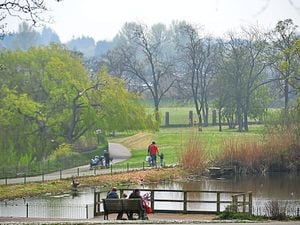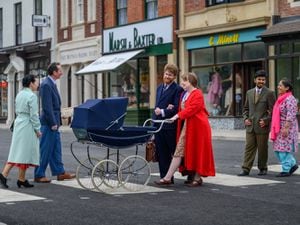Look beyond the bricks and you’ll discover a green and pleasant land
Forests, orchards, lakes and conservation areas?

These are not the first things that spring to mind when most people think of the West Midlands, the sprawling conurbation that for years, spread itself across the centre of the country under a giant cloud of factory smoke.
This is the land of the blast furnace, the seat of the industrial revolution where the smokestacks rise high and the wheels of heavy industry grind and clatter.
So it is hardly surprising that in some quarters, Professor Kathryn Moore's plan to plonk the UK's 16th national park here has been met with a mixture of mockery and disdain.
The landscape architect wants us to take a step back and reconsider how we view the region, arguing that the cities and towns of the future will be far better places to live and work if they are given an altogether greener outlook.
Her proposals are undoubtedly ambitious, but perhaps not as far fetched as some may suggest.
Birmingham has more than 8,000 acres of green spaces and parks – more than any other city in Europe – and has more miles of canals than Venice.
And the Black Country's days of heavy polluting industry are long gone, with a close inspection of its landscape revealing numerous areas of natural beauty.
The area to the east of West Bromwich is a case in point, where the M5 has Sandwell Valley Country Park and Dartmouth Park on one side, with the sprawling green plot containing Handsworth cemetery, two golf clubs and the River Tame on the other.
Dudley's Baggeridge Country Park stretches across to Himley Hall, with the Cotwall End Nature Reserve and Penn Common all within a short distance.
Travel a few miles out of any of our town or city centres and you are in England's green and pleasant land.
Yet all too often these places are overlooked, almost as if they are overshadowed by the tangled road networks and the remnants of our industrial past.
Prof Moore's says the benefits to her plan are many, with new green spaces serving as a driving force for social, economic and environmental change in the region.
One example she gives involves the creation of new farmland, with a return of large scale agriculture to some parts of the region helping to drastically increase the home grown food supply.
She concedes that all of this requires not only a massive transformation, but also a marked change in attitude and perceptions.
And while the proposals appear to have ministerial and mayoral support, there are a number of sizeable stumbling blocks in the way.
Prof Moore views HS2 as a catalyst to create her vision of a greener West Midlands, a part of the plan that could be scuppered if the project is scrapped due to concerns over cost.
The National Park idea also has echoes of recent plans for a 'garden city' in the Black Country, another bold concept aimed at fulfilling the region's housing need while at the same time creating more green spaces.
It was launched to great fanfare in 2015 and not much has been heard of it since.
Question marks also remain as to how such a project would be funded, and with the region desperately short of housing, there is always the likelihood that any long term plans are allowed to fade into the distance in the mad rush to fill the shortfall.





